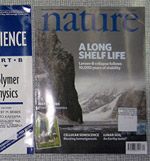Comparing urban growth boundaries with targeted land protection tools
 Planning,
Planning,  Policy,
Policy,  Preservation
Preservation  The Palouse region. Credit, Lynn Suckow.The most common strategies to slow the impact of development on natural resources involve either public policies such as zoning, regulations, and ordinances, or land protection tools like conservation easements or property acquisitions.
The Palouse region. Credit, Lynn Suckow.The most common strategies to slow the impact of development on natural resources involve either public policies such as zoning, regulations, and ordinances, or land protection tools like conservation easements or property acquisitions.
Land use policies and land protection tools are not mutually exclusive. However, they have not been often used in combination to achieve conservation goals. A recent analysis of the effectiveness of several regulatory and land protection mechanisms provides evidence of their ability to work together to achieve focused conservation that provides both societal and natural resource benefits.
In response to rapid and often unregulated development, residents of rural western Idaho have begun to place high value on the region’s landscapes and the animals that inhabit them, and are grappling with how to protect them in an area which has seen population growth which outpaces much of the rest of the United States. Researchers modeled land conversion patterns in two rural Idaho counties under three different scenarios:
- Imposition of land use conversion regulations designed to protect prime productive lands;
- Designated urban growth boundaries around existing incorporated areas; and
- Targeted protection of privately owned, high-priority conservation parcels via easements.
The effectiveness of each of these scenarios in protecting habitat, landscape, and key vertebrate species was assessed through measurement of impacts on four social values, three Species of Special Concern, and four iconic species representing the landscape scale Palouse Prairie ecosystem.
The study found that designating urban growth boundaries around existing populations centers was the scenario that resulted in the fewest negative impacts on both socially determined land use values and on ecological measures. This scenario preserved larger, more contiguous areas of open land and prairie habitat. It was moderately successful in protecting productive agricultural lands, and provided the best outcome in terms of reduced fire hazards in new developments.
However, because existing urban areas have largely been established in formerly high quality natural habitat, a side effect of concentrating land development within growth boundaries is an increased likelihood that remaining habitat remnants will be converted to development.
In order to counter this effect, the researchers recommend combining growth boundaries around urban areas with the targeted protection of high-priority conservation lands via easements and fee title acquisitions. The research suggests that integrating a land protection tool commonly used by non-governmental organizations into a regulatory scheme of designated growth areas would provide the best outcomes for both ecological and social values in this study.
--by Karen Bassler, writer and consultant with Superior Nonprofits
Goldberg, Caren S., et al. “Predictions of ecological and social impacts of alternative residential development policies to inform decision making in a rural landscape.” Conservation Letters 0 (2011) 1 – 10.




Reader Comments